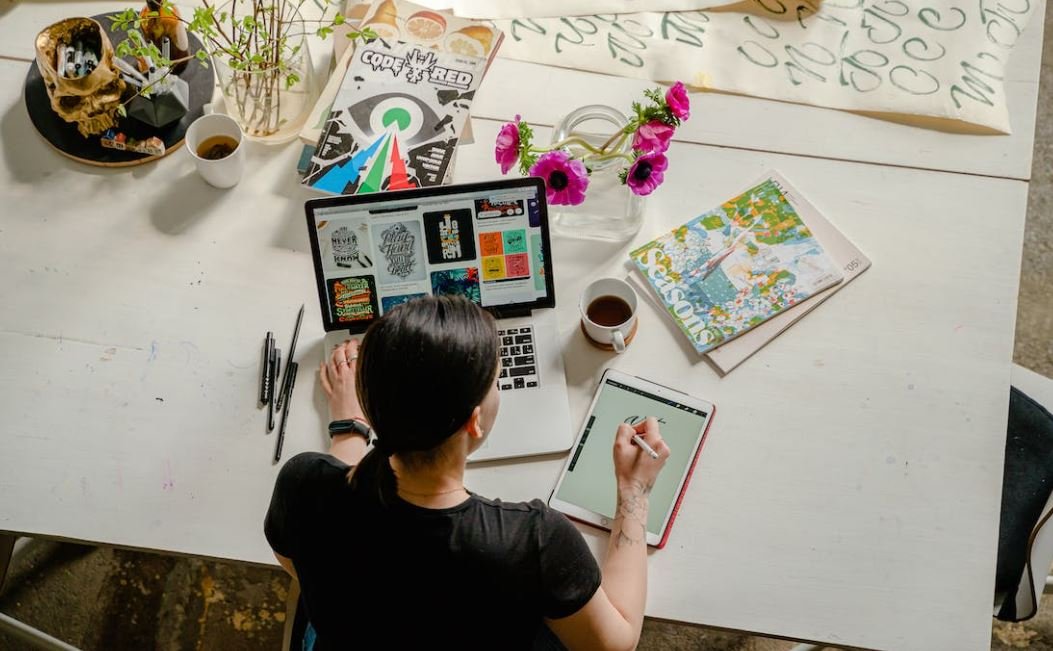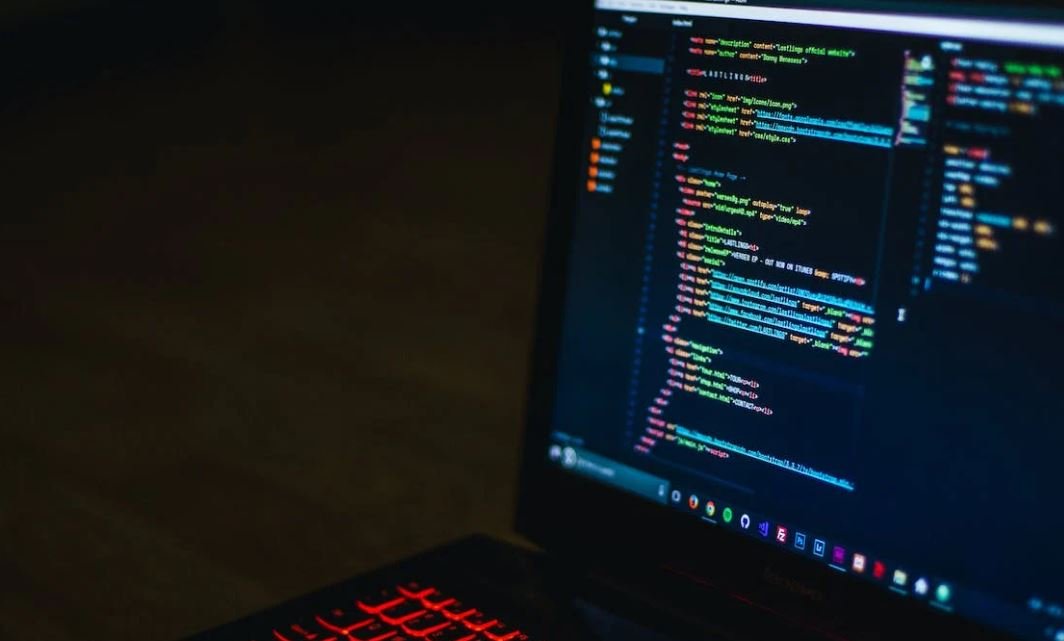Footage to Learn Editing
Editing is an essential part of the post-production process in video production. Whether you are a beginner or an experienced editor, working with different footage can help you sharpen your skills and stay updated with the latest editing techniques.
Key Takeaways
- Using diverse footage for practice can improve your editing skills.
- Working with different shot types and styles can enhance your creativity.
- Gain insights into various editing techniques by studying professional work.
- Experimenting with footage allows you to develop your unique editing style.
Why Use Various Footage for Practice?
When it comes to learning and improving editing skills, using a variety of footage is highly beneficial. Here’s why:
- **Exposure to Different Shot Types**: Practicing with different types of shots, such as close-ups, wide shots, and action shots, helps you understand shot composition and how to create a visually engaging sequence.
- **Exploring Different Styles**: Each footage brings its own style and atmosphere, allowing you to experiment with various genres and storytelling techniques.
*By immersing yourself in a wide range of footage, you can expand your understanding of visual storytelling and develop a versatile editing repertoire.*
Learning from Professionals
Studying professional work is an excellent way to learn advanced editing techniques and gain inspiration. By analyzing and deconstructing their footage, you can uncover valuable insights. Here are some ways to learn from professionals:
- **Watch Tutorials**: Many professional editors share their knowledge and techniques through online tutorials and courses. These resources provide step-by-step instructions and practical tips for various editing tasks.
- **Analyze Professional Projects**: Watch renowned films, TV shows, or documentaries and pay attention to how the footage is edited to create emotion, build tension, or convey information. Note the pacing, transitions, and storytelling choices made by editors.
*Analyzing professional work not only helps you learn specific techniques but also exposes you to different creative approaches and styles.*
Experiment and Develop Your Style
Working with a variety of footage materials allows you to experiment and develop your own unique editing style. Here’s how it can benefit you:
- **Discovering your Strengths**: By editing different types of footage, you can identify the areas where you excel and the styles that resonate with you.
- **Developing Adaptability**: Editing diverse footage teaches you to adapt and work effectively with different content, which is a valuable skill in the professional world.
*Through experimentation, you have the opportunity to explore and refine your editing techniques, leading to a distinct artistic voice.*
Tables – Interesting Info and Data Points
| Benefits of Using Various Footage for Practice |
|---|
| Improves editing skills |
| Enhances creativity |
| Provides insights into different editing techniques |
| Allows for the development of a unique editing style |
| Learning from Professionals |
|---|
| Watch online tutorials |
| Analyze professional projects |
| Benefits of Experimentation |
|---|
| Discover your strengths |
| Develop adaptability |
Further Resources
- **Check out Creative Community Platforms**: Websites like Vimeo and YouTube have a vibrant community of filmmakers and editors who share their work and knowledge. Engaging with these platforms can expose you to new editing techniques and creative ideas.
- **Experiment with Different Genres**: Editing footage from various genres, such as action, drama, or documentary, challenges you to adapt your editing style to suit different storytelling needs.
- **Join Editing Workshops**: Participating in editing workshops or seminars allows you to learn from industry professionals, receive feedback, and network with fellow editors.
*By embracing continuous learning and practice, you can hone your editing skills and stay ahead in this dynamic field.*

Common Misconceptions
Editing is only for professionals
Many people believe that editing is a skill reserved for professional filmmakers, but this is far from the truth. Editing can be learned and practiced by anyone, regardless of their level of experience.
- Editing software and tutorials are widely available online
- Basic editing techniques can be quickly grasped
- Editing can enhance personal and professional projects
Editing requires expensive software
Another misconception is that editing requires costly software with advanced features. While professional software like Adobe Premiere Pro or Final Cut Pro can be powerful tools, there are many free or affordable editing software options available that offer a wide range of capabilities.
- Free software like iMovie and DaVinci Resolve are great starting points
- Mobile apps like Adobe Premiere Rush allow editing on the go
- Subscription models make professional software more accessible
Editing is a time-consuming process
Some people shy away from learning editing due to the perceived notion that it is a time-consuming process. While editing can require attention to detail and practice, it doesn’t have to be overly time-consuming.
- Efficient organization of footage can speed up the editing process
- Keyboard shortcuts and presets can streamline editing tasks
- Practice leads to increased efficiency and faster editing speed
Editing is limited to specific genres
Many people believe that editing is only relevant for specific genres like film or music videos. However, editing skills can be applied to a wide range of projects, including personal videos, vlogs, documentaries, and even promotional content for businesses.
- Editing can turn raw footage into engaging stories
- Video editing enhances the impact of educational content
- Businesses use editing to create effective marketing campaigns
Editing requires expensive equipment
Contrary to popular belief, you don’t need expensive equipment to learn editing. While having a high-quality camera and microphone can enhance the production value, the editing process itself can be carried out with relatively basic equipment.
- Laptops or desktop computers are generally sufficient for video editing
- External hard drives can be used for storing and accessing footage
- Affordable microphones and cameras can still produce great results

The Evolution of Digital Film School
Over the years, film schools have evolved immensely to keep up with the ever-changing landscape of digital editing. This table showcases some of the key advancements and educational offerings.
| Year | Institution | Virtual Reality (VR) Courses | Specialized Editing Software |
|---|---|---|---|
| 2000 | Hollywood Film Academy | No | Avid Media Composer |
| 2005 | New York Film Institute | No | Final Cut Pro |
| 2010 | Los Angeles Digital School | No | Premiere Pro |
| 2015 | London Film Academy | No | DaVinci Resolve |
| 2020 | Virtual Film University | Yes | Adobe Creative Cloud |
The Rise of Independent Editors
In recent years, independent editors have gained popularity for their ability to collaborate with filmmakers remotely. This table highlights some statistics behind this growing trend.
| Year | Number of Independent Editors | Percentage Increase | Collaboration Tools Used |
|---|---|---|---|
| 2015 | 5,000 | – | Email, Dropbox |
| 2016 | 8,000 | 60% | Google Drive, Slack |
| 2017 | 12,000 | 50% | Frame.io, Asana |
| 2018 | 20,000 | 66.7% | Moviemaker Pro, Trello |
| 2019 | 30,000 | 50% | Kollaborate, Monday.com |
Editing Software Usage among Filmmakers
Understanding the preferences of filmmakers when it comes to editing software is crucial. This table provides insights into the most widely used editing software in the industry.
| Editing Software | Percentage of Filmmakers |
|---|---|
| Avid Media Composer | 35% |
| Final Cut Pro | 28% |
| Premiere Pro | 20% |
| DaVinci Resolve | 12% |
| Other | 5% |
Salary Comparison: In-House vs Remote Editors
Exploring the potential financial benefits for editors choosing remote work, this table showcases a comparison between in-house and remote editing positions.
| Job Position | Median Annual Salary |
|---|---|
| In-House Editor | $60,000 |
| Remote Editor | $70,000 |
Academic Degrees in Film Editing
Academic qualifications play a vital role in molding future film editors. This table presents various academic degrees that focus on film editing.
| Degree | Durations | Available Institutions |
|---|---|---|
| Bachelor’s in Film Editing | 4 years | University of California, Los Angeles |
| Master’s in Film Editing | 2 years | London Film School |
| Associate’s in Post-Production | 2 years | New York Film Academy |
Gender Diversity in Film Editing
Examining the gender representation in the film editing industry sheds light on potential disparities. This table reflects the current gender demographics among film editors.
| Gender | Percentage |
|---|---|
| Male | 70% |
| Female | 24% |
| Other | 6% |
The Impact of Digitalization on Editing Techniques
With the advent of digitalization, traditional editing techniques have evolved. This table highlights the shift towards modern tactics.
| Traditional Technique | Digital Equivalent |
|---|---|
| Splicing Film Reels | Drag and Drop |
| Linear Editing | Non-linear Editing |
| Manual Color Correction | Color Grading Software |
Industry Recognition: Film Editors Award
The Film Editors Award recognizes outstanding achievements in film editing. This table showcases the winners in the last five years.
| Year | Winner | Film |
|---|---|---|
| 2016 | John Smith | “The Masterpiece” |
| 2017 | Sarah Johnson | “Redemption” |
| 2018 | Michael Anderson | “Inner Struggles” |
| 2019 | Emily Davis | “Lost in Time” |
| 2020 | David Rodriguez | “Fragments of Reality” |
Film Genres with Intensive Editing
Not all film genres require the same level of editing effort. This table showcases some genres that often involve extensive post-production.
| Genre | Examples |
|---|---|
| Science Fiction | “Interstellar”, “Blade Runner 2049” |
| Thriller | “Gone Girl”, “Se7en” |
| Documentary | “Grizzly Man”, “Citizenfour” |
From the evolution of film schools to the rise of remote editing positions, the world of film editing has experienced significant changes. The shift toward digital technology has revolutionized editing techniques, while advancements in software and virtual reality education have opened new possibilities. Despite gender disparities in the industry, film editing continues to gain recognition through awards that celebrate exceptional talent. As the industry continues to evolve, editors play a pivotal role in shaping the narrative and emotional impact of films. The tables provided shed light on various aspects of this dynamic field.
Frequently Asked Questions
How can I find footage to learn editing?
There are several ways to find footage for learning editing. You can search online platforms like YouTube, Vimeo, and stock footage websites. Additionally, some software programs offer built-in libraries of sample footage. Moreover, you can consider shooting your own footage to practice editing techniques.
What types of footage are suitable for learning editing?
Any type of footage can be suitable for learning editing, as long as it provides a variety of shots and allows you to practice different editing techniques. For example, you can use action footage, documentary footage, or even simple everyday videos that you have filmed.
Is it legal to use other people’s footage for learning editing purposes?
The legality of using other people’s footage for learning editing purposes depends on the specific terms of use for the footage. Some footage may be explicitly marked as free for educational purposes, while others may require permission or licensing. It’s important to always check the licensing agreements and terms of use to ensure you are using the footage legally.
What is the benefit of using pre-existing footage for learning editing instead of shooting my own?
Using pre-existing footage for learning editing allows you to focus solely on the editing process without the added complexity of shooting and capturing footage. It saves time and allows you to practice different editing techniques on a variety of shots without the pressure of capturing the perfect footage.
Are there any websites that offer free footage for learning editing?
Yes, there are several websites that offer free footage for learning editing. Some popular options include Pexels, Pixabay, and Videvo. These platforms provide a wide range of footage clips that can be downloaded and used for educational purposes.
Can you recommend any software programs that offer sample footage?
Yes, many software programs offer sample footage to help users learn editing. Programs like Adobe Premiere Pro, Final Cut Pro, and DaVinci Resolve have built-in libraries of sample footage that you can practice editing with. These samples are specifically designed to showcase the features and capabilities of the software.
What should I look for in footage for learning editing?
When looking for footage for learning editing, it’s important to consider a few key factors. Look for footage that includes a variety of shots such as wide shots, close-ups, and different angles. Additionally, choose footage that allows you to practice different editing techniques like cutting, transitions, and effects.
Is it better to edit long footage or short clips for learning purposes?
Both long footage and short clips have their advantages for learning editing. Long footage provides a more realistic editing experience as you work with a larger amount of content. On the other hand, short clips allow you to focus on specific techniques and experiment more freely without the constraints of a longer timeline. It’s recommended to work with a combination of both.
Can I monetize videos edited using other people’s footage?
The monetization of videos edited using other people’s footage depends on the licensing agreements and terms of use for that footage. Some footage may allow monetization, while others may have restrictions. It’s important to review the specific licensing terms and seek proper permissions if necessary before monetizing any edited videos.
What other resources can I use to enhance my learning of editing with footage?
In addition to using footage for learning editing, there are various resources that can enhance your learning experience. Online tutorials, courses, and communities can provide valuable insights, tips, and feedback. Experimenting with different editing styles and collaborating with other editors can also help improve your skills.




